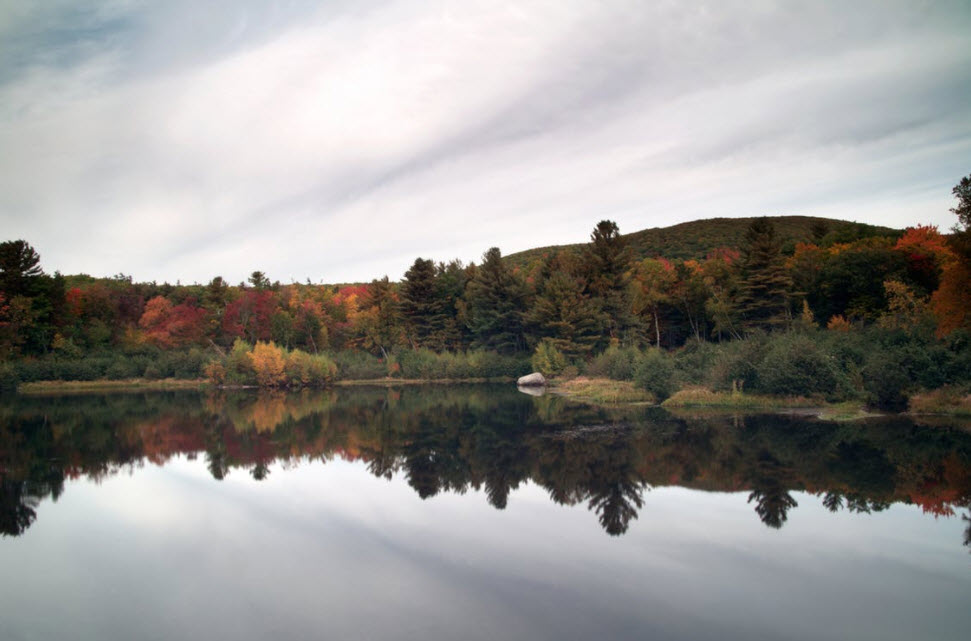
Why is it important to hire experts, even on things that seem rather “obvious”?
When it comes to litigation, lay persons should not rely on their own observations and beliefs when it comes to scientific or technical matters that experts should address. The Zdziebloskis learned this the hard way when they unsuccessfully attempted to convince a New York federal court about the underground seepage of pond water from their property.
Since 1977, John and Shiela Zdziebloski resided in Rensselaer, New York. On the northwest corner of this property is a pond called “Sheila’s Pond.” And, north of Sheila’s Pond is Onderdonk Estates, a housing development that the Town of East Greenbush approved construction of in the 1970s. Oderondonk Estates have several intertwining cul-de-sacs, and has a stormwater retention basin that was built to prevent run-off into Sheila’s Pond.
The Town of East Greenbush was to take over the maintenance from a private party of the stormwater retention basin, its associated pipes and structures. However, the basin was purchased by a private citizen in 1993, and fell into a state of disrepair, which caused an increase in flooding, and silt and mud discharge into Sheila’s Pond. As a result, the Zdziebloskis commenced a lawsuit against the Town of East Greenbush, alleging that improper maintenance of the stormwater basin on Oderondonk Estates caused the basin to discharge pollutants into Sheila’s Pond, “a water of the United States”, and thereby the Town violated the federal Clean Water Act (CWA).
The central issue of the case became whether Sheila’s Pond was considered “water[ ] of the United States” subject to regulation under the CWA. This issue is actually fairly complicated, because the definition of a “water of the United States” is not well-settled. The EPA and Army Corps of Engineers changed the definition in 2015, but this definition has been halted nationwide while the courts address allegations that the new regulations are arbitrary and capricious. Under the previous regulation, a “water of the United States” is “a traditionally navigable waterway,” including “[w]etlands adjacent to navigable waterways (other than waters that are themselves wetlands).” Sheila’s Pond is undoubtedly a wetland, but it is adjacent to a non-navigable tributary of a traditionally navigable waterway, not the waterway itself.
In 2006, the Supreme Court attempted to address the question of whether the CWA covers wetlands “adjacent to a non-navigable tributary of a traditionally navigable waterway” in the case of Rapanos v.United States, but could not render a majority opinion (the Justices ended up issuing five separate opinions). Justice Scalia and Justice Kennedy offered different tests for determining whether a wetland falls under the purview of the CWA. Justice Scalia developed a two-part test, determining that “wetlands should only fall within CWA jurisdiction when they: (1) are adjacent to a ‘relatively permanent body of water connected to traditional interstate navigable waters’; and (2) have ‘a continuous surface connection with that water.'” Precon Dev. Corp., Inc. v. U.S. Army Corps of Eng’rs, 633 F.3d 278, 288 (4th Cir. 2011) (quoting Rapanos, 547 U.S. at 742) (plurality opinion)). However, Justice Kennedy’s test concluded that a wetland is only covered by the CWA when there is a “significant nexus between the wetlands in question and navigable waters in the traditional sense.” Id. (quoting Rapanos, 547 U.S. at 779, 782 (Kennedy, J., concurring in the judgment)).
The Northern District of New York ruled that Sheila’s Pond does not meet either of the foregoing tests.
The court evaluated the Zdziebloskis’ argument that water from Sheila’s Pond must be seeping through the porous gravel to the wetland, but found it unconvincing. First, Mr. Zdzieblowski was a lay witness and unqualified to comment on the hydraulics of the pond and gravel. Second, the expert witness the plaintiffs relied on did not do any of his own testing or research on the property, instead relying on Mr. Zdziebloski’s observation of the events on his land.
The court found the evidence too speculative to support either “a continuous surface connection with [The Hudson River]” (Scalia Test) or a “significant nexus between [Sheila’s Pond] and [The Hudson River] in the traditional sense,” (Kennedy Test) as required by Rapanos. As a result, the court ruled that Sheila’s Pond was not a “water of the United States” for the purposes of the CWA, and therefore, the Town of East Greenbush was not liable for the runoff into the pond or the subsequent flooding.
This case is an important reminder that before you decide to commence a lawsuit involving technical issues of fact, like the movement of water from a pond, you must retain an expert must be retained to provide opinions to the court. Courts are reluctant to take opinions from lay litigants on such facts.
Call the attorneys of Periconi, LLC at (212) 213-5500 if you are faced with a case concerning property contamination or wetlands.

